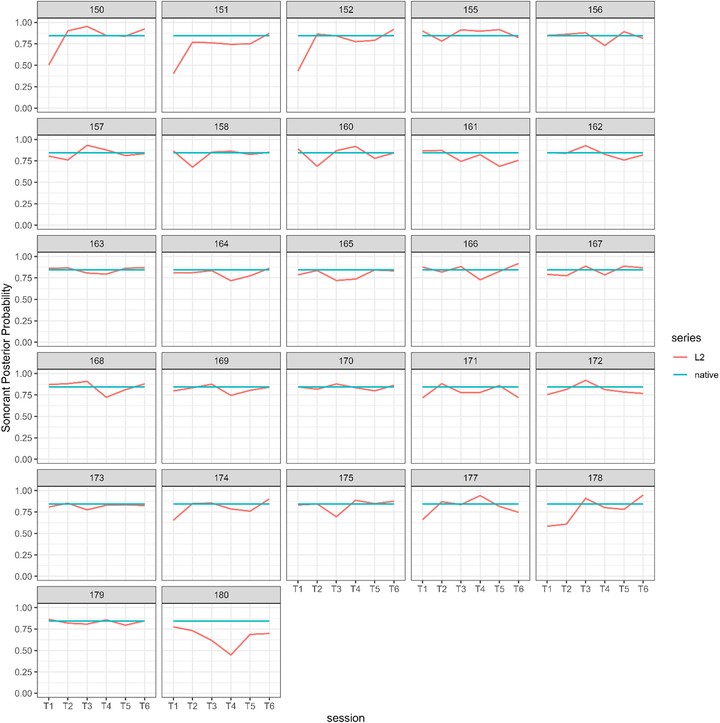Individual Differences in Language Acquisition: The Impact of Study Abroad on Native English Speakers Learning Spanish

Abstract
This study investigated the acquisition of lenition in Spanish voiced stops (/b, d, ɡ/) by native English speakers during a study-abroad program, focusing on individual differences and influencing factors. Lenition, characterized by the weakening of stops into fricative-like ([β], [ð], [ɣ]) or approximant-like ([β̞], [ð̞], [ɣ̞]) forms, poses challenges for L2 learners due to its gradient nature and the absence of analogous approximant forms in English. Results indicated that learners aligned with native speakers in recognizing voicing as the primary cue for lenition, yet their productions diverged, favoring fricative-like over approximant-like realizations. This preference reflects the combined influence of articulatory ease, acoustic salience, and cognitive demands. Individual variability in learners’ trajectories highlights the role of exposure to native input and sociolinguistic engagement. Learners benefitting from richer, informal interactions with native speakers showed greater alignment with native patterns, while others demonstrated more limited progress. However, native input alone was insufficient for learners to internalize subtler distinctions such as place of articulation and stress. These findings emphasize the need for combining immersive experiences with targeted instructional strategies to address articulatory and cognitive challenges. This study contributes to the understanding of L2 phonological acquisition and offers insights for designing more effective language learning programs to support lenition acquisition in Spanish.